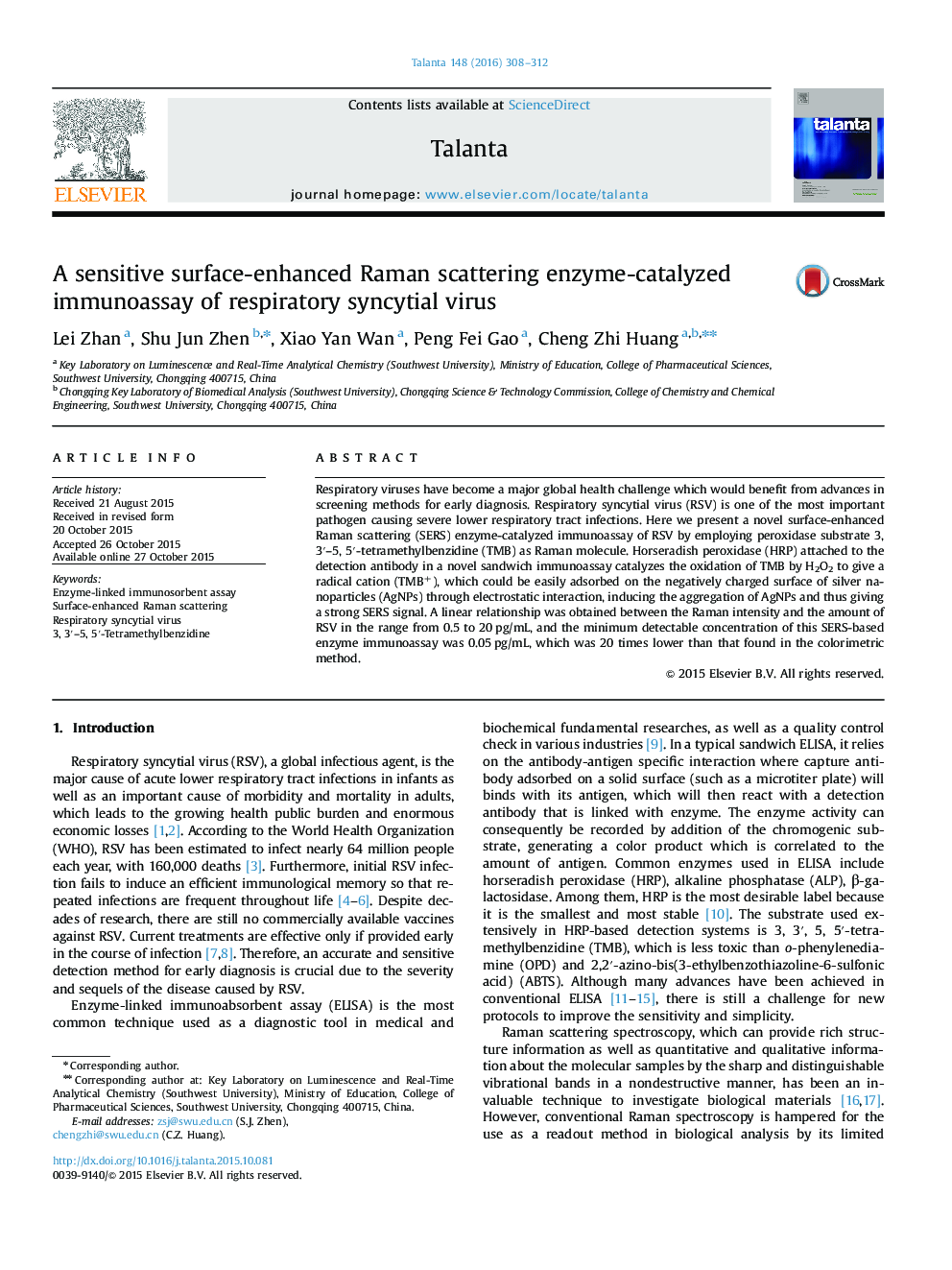| Article ID | Journal | Published Year | Pages | File Type |
|---|---|---|---|---|
| 1243789 | Talanta | 2016 | 5 Pages |
•A novel SERS immunoassay based on enzyme reaction was developed.•Enzyme reaction product causes aggregation of AgNPs to produce strong SERS signals.•The minimum detectable concentration of RSV reaches 0.05 pg/mL.
Respiratory viruses have become a major global health challenge which would benefit from advances in screening methods for early diagnosis. Respiratory syncytial virus (RSV) is one of the most important pathogen causing severe lower respiratory tract infections. Here we present a novel surface-enhanced Raman scattering (SERS) enzyme-catalyzed immunoassay of RSV by employing peroxidase substrate 3, 3′–5, 5′-tetramethylbenzidine (TMB) as Raman molecule. Horseradish peroxidase (HRP) attached to the detection antibody in a novel sandwich immunoassay catalyzes the oxidation of TMB by H2O2 to give a radical cation (TMB+), which could be easily adsorbed on the negatively charged surface of silver nanoparticles (AgNPs) through electrostatic interaction, inducing the aggregation of AgNPs and thus giving a strong SERS signal. A linear relationship was obtained between the Raman intensity and the amount of RSV in the range from 0.5 to 20 pg/mL, and the minimum detectable concentration of this SERS-based enzyme immunoassay was 0.05 pg/mL, which was 20 times lower than that found in the colorimetric method.
Graphical abstractA highly sensitive immunoassay of respiratory syncytial virus (RSV) based on surface-enhanced Raman scattering (SERS) has been developed by employing peroxidase substrate 3, 3′–5, 5′-tetramethylbenzidine (TMB) as Raman molecule.Figure optionsDownload full-size imageDownload as PowerPoint slide
